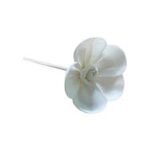**Stem Cell Transplantation in Feline Cardiac Care: Pioneering Treatment for Heart Disease**

Heart disease in cats is a challenging condition that often demands innovative approaches for effective treatment. Stem cell transplantation has emerged as a groundbreaking therapy, offering promising outcomes in feline cardiac care. This article explores the intricacies of stem cell transplantation in treating heart disease in cats, highlighting the reasons for choosing this method, the surgical processes involved, and the potential benefits for our feline companions.
**1. Understanding Feline Heart Disease:**
– **Prevalence and Challenges:**
Heart disease in cats, including conditions like hypertrophic cardiomyopathy, presents unique challenges due to the subtle nature of symptoms and the limited array of conventional treatments.
– **Impact on Quality of Life:**
Heart disease can significantly impact a cat’s quality of life, leading veterinarians to explore innovative solutions for improved outcomes.
**2. Rationale for Stem Cell Transplantation:**
– **Regenerative Potential:**
Stem cells possess regenerative properties, making them an ideal candidate for repairing damaged cardiac tissues and promoting overall heart health.
– **Reducing Inflammation:**
Stem cells have anti-inflammatory effects, which can be crucial in mitigating inflammation associated with cardiac diseases.
**3. Preoperative Assessment for Stem Cell Transplantation:**
– **Diagnostic Imaging:**
Advanced imaging techniques, such as echocardiography, help assess the extent of cardiac damage, guiding the selection of an appropriate stem cell transplantation approach.
– **Cardiac Function Evaluation:**
Comprehensive evaluation of cardiac function is essential to determine the severity of the condition and tailor the transplantation procedure accordingly.
**4. Anesthesia and Surgical Planning:**
– **Tailored Anesthesia Protocols:**
Cats undergoing stem cell transplantation receive specialized anesthesia protocols to ensure a safe and controlled environment during the procedure.
– **Stem Cell Source:**
The source of stem cells can vary, including autologous (from the cat’s own body) or allogeneic (from a donor) sources. Each has its considerations, and the choice depends on the specific case.
**5. Surgical Process of Stem Cell Transplantation:**
– **Stem Cell Harvesting:**
If autologous stem cells are used, they are harvested from the cat’s own adipose tissue or bone marrow.
– **Injection into the Heart Tissues:**
Stem cells are carefully injected into the affected areas of the heart, promoting tissue repair and regeneration.
**6. Postoperative Care and Monitoring:**
– **Cardiac Monitoring:**
Postoperative care involves continuous monitoring of the cat’s cardiac function to assess the effectiveness of the stem cell transplantation.
– **Anti-Rejection Measures:**
In cases of allogeneic stem cell transplantation, measures to prevent rejection are implemented, ensuring the cat’s immune system accepts the transplanted cells.
**7. Potential Benefits of Stem Cell Transplantation:**
– **Tissue Regeneration:**
Stem cells contribute to the regeneration of damaged cardiac tissues, potentially improving overall heart function.
– **Symptom Mitigation:**
Stem cell transplantation aims to alleviate symptoms associated with heart disease, enhancing the cat’s comfort and well-being.
**8. Considerations for Cat Owners:**
– **Postoperative Observations:**
Cat owners play a vital role in observing changes in their cat’s behavior, energy levels, and any signs of improvement post-stem cell transplantation.
– **Collaborative Care:**
Collaborative care between cat owners and veterinary professionals is essential for ongoing monitoring and adjustments to the treatment plan.
**Conclusion:**
Stem cell transplantation in feline cardiac care represents a groundbreaking frontier, offering hope for cats affected by heart disease. As a pioneering approach, it showcases the potential to enhance cardiac function and improve the overall quality of life for our beloved feline companions. Always consult with veterinary professionals to determine the most suitable treatment plan for your cat’s specific condition.


